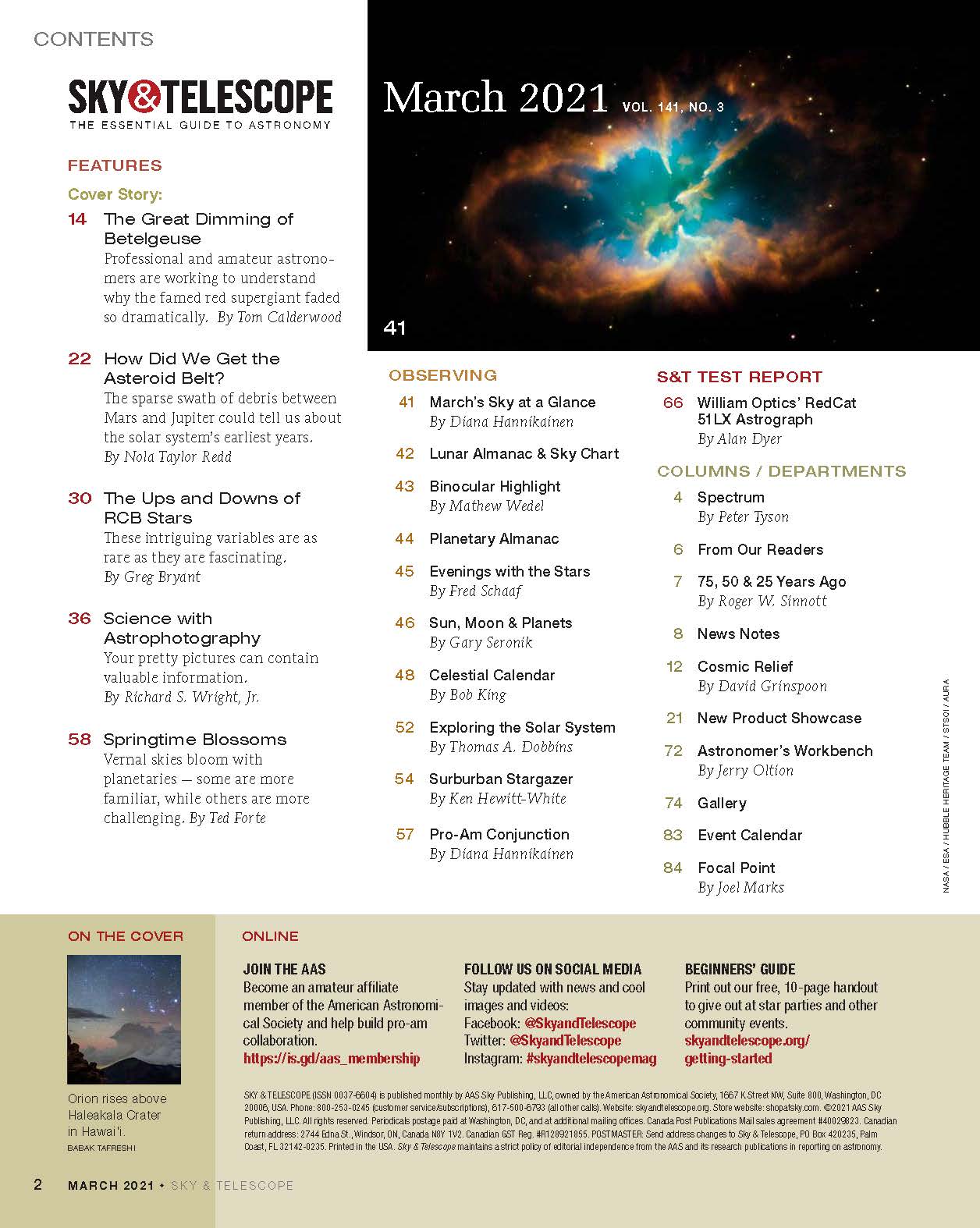Inside Sky & Telescope's March 2021 Issue
Sabrina Garvin Sky & Telescope
Betelgeuse, the Asteroid Belt, and the Beehive Cluster
In the March 2021 issue of Sky & Telescope, we reveal the many ways “pretty pictures” can serve science. From beautiful astrophotos to beginners learning to navigate the night sky to citizen scientists at their computers, a variety of astronomical explorations make for useful scientific endeavors. For instance, the American Association of Variable Star Observers were the first on the scene when Betelgeuse dimmed so drastically last winter. Now, professionals are using their data to determine what happened to the bright red star in Orion. We’re also hunting down the rare R Coronae Borealis stars that periodically fade in nosedives even more drastic than Betelgeuse’s “Great Dimming.” Plus, scientists are rethinking the history of the asteroid belt. These space rocks may not be a collection of failed planets but displaced material from across the solar system.
Featured Articles
The Great Dimming of Betelgeuse
Professional and amateur astronomers are working to understand why the famed red supergiant faded so dramatically.
By Tom Calderwood
How Did We Get the Asteroid Belt?
The sparse swath of debris between Mars and Jupiter could tell us about the solar system’s earliest years.
By Nola Taylor Redd
The Ups and Downs of RCB Stars
These intriguing variables are as rare as they are fascinating.
By Christopher Crockett
Science with Astrophotography
Your pretty pictures can contain valuable information.
By Richard S. Wright, Jr.
Springtime Blossoms
Vernal skies bloom with planetaries — some are more familiar, while others are more challenging.
By Ted Forte
Beyond the Printed Page
Arecibo Radio Telescope
Watch the dramatic and heartwrenching collapse of this beloved telescope
Milky Way Sky Survey
Enjoy this high-resolution hydrogen-alpha map of the sky.
Citizen Science
Participate in research projects across the globe from home with your computer.
Observing Resource: ClearDarkSky
Check the astronomical seeing conditions in your area before venturing out to observe.
Also in this issue:
Gemini’s Like and Unlike Twins
Castor and Pollux share many similarities, but both stars are unique.
By Fred Schaaf
Vesta Reaches Opposition
The solar system’s brightest asteroid is at its best as it loops through Leo.
By Bob King
Seeing for Planetary Observers
Knowing how Earth’s atmosphere functions can improve your chances of experiencing good planetary views.
By Thomas A. Dobbins
All Around the Beehive
Don’t bypass Cancer, a seemingly shy constellation trying hard not to be seen.
By Ken Hewitt-White
If you like what you see, subscribe!



